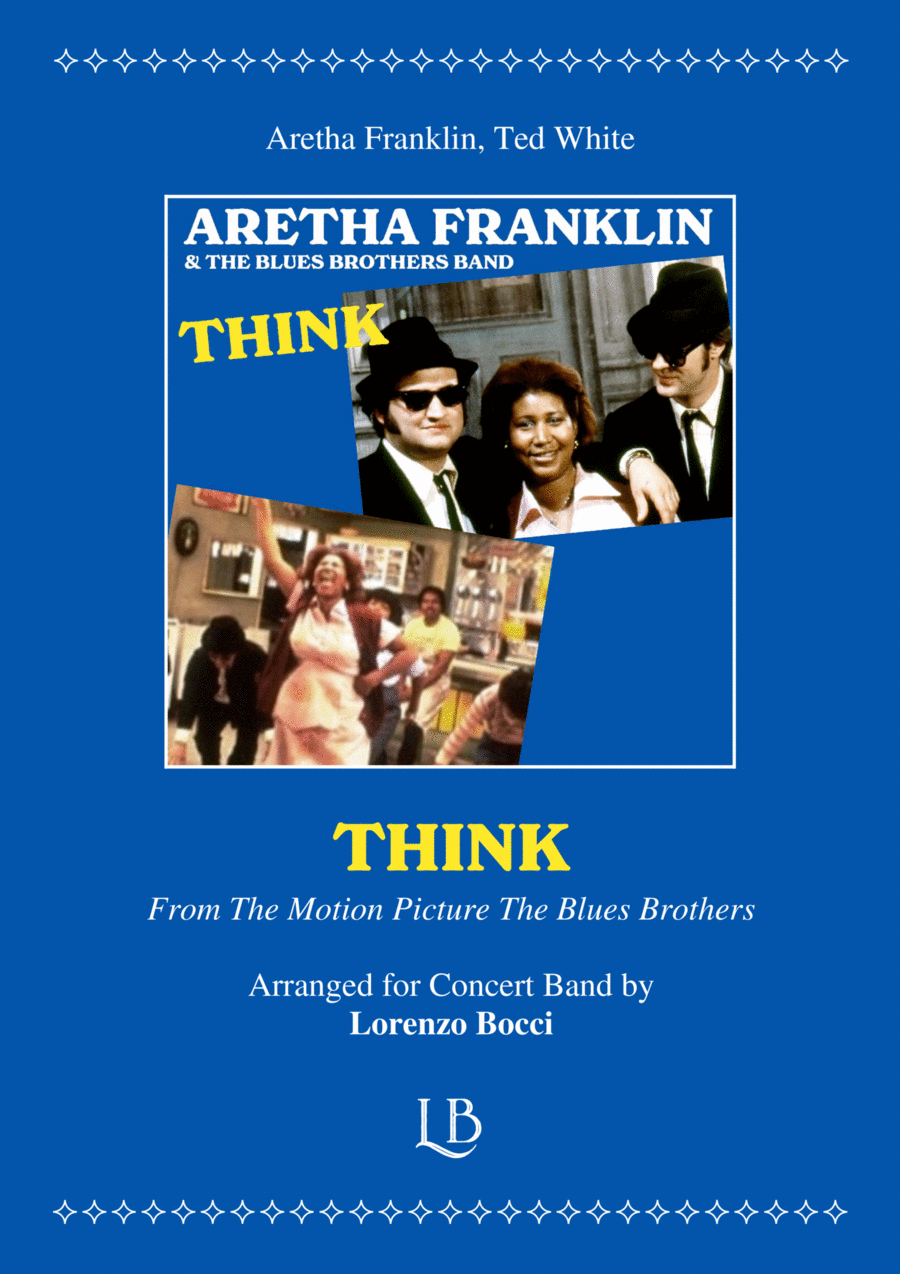Concert Band - Level 3 - Digital Download SKU: A0.1383517 By Aretha Franklin. By Aretha Franklin and Ted White. Arranged by Lorenzo Bocci. Broadway,Film/TV,Musical/Show,R and B,Soul. 68 pages. Lorenzo Bocci #967963. Published by Lorenzo Bocci (A0.1383517). THINK From The Motion Picture The Blues Brothersfor Concert Band (with Fanfare Band parts) - Grade 3 - Digital Download Composed by Aretha Franklin, Ted White. Arranged by Lorenzo Bocci. Soul/RandB/Film/Musical. Concert Band - Blasorchester - Harmonie. Score and parts. With Fanfare Band parts. Duration 2'41''. Published by Lorenzo Bocci.Instrumentation:Full Score, Flute 1, 2, Oboe, Bassoon, Eb Clarinet, Bb Clarinet 1, 2, 3, Bb Bass Clarinet, Eb Alto Saxophone 1, 2, Bb Tenor Saxophone, Eb Baritone Saxophone, Bb Trumpet 1, 2, 3, F Horn 1, 2, 3, 4, Trombone 1, 2, Bass Trombone, Euphonium, Bass, Electric Bass, Drum Set, Percussion (Shaker, Tambourine), Electric Guitar, Piano.Additional Parts:Bb Soprano Saxophone (CB, FA), Eb Horn 1, 2, 3, 4, Bb Trombone 1, 2 T.C., B.C., Bb Bass Trombone T.C., B.C., Bb Euphonium T.C., B.C., Bb Bass T.C., B.C., Eb Bass T.C., B.C.Fanfare Band Parts:Eb Cornet, Bb Flugelhorn 1, 2, 3.Think is a song written by American singer Aretha Franklin and Ted White, and first recorded by Aretha Franklin. It was released as a single in 1968, from her Aretha Now album. Aretha Franklin re-recorded the song in the Atlantic Records New York studio for the soundtrack of the 1980 film The Blues Brothers and in 1989 for the album Through the Storm. Pitchfork placed it at number 15 on its list of The 200 Greatest Songs of the 1960s.Subscribe to my YouTube Channel to stay updated on new releases.
